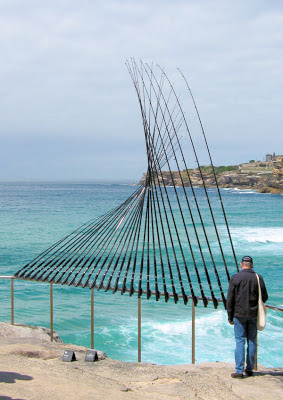Centennial Park, situated in Sydney's eastern suburbs, was dedicated as a public open space in 1888.
The park's construction was implemented by Charles Moore, then Director of the Royal Botanical Gardens, on what was then "coastal shrub land and swamp." The land was "cleared and
sculpted into an open, undulating expanse to provide recreation in an
idealised setting,"
The Parklands now support a diverse range of activities including
horse riding, bike riding, rollerblading, bird watching, and a range of
sports.
The Federation Pavilion (above) is located within a huge 'dog off the leash' area (although the dogs are not permitted within 10 metres of the pavilion). Built in 1988, it was designed by Sydney architect Alexander Tzannes as a Bicentennial refurbishment, after he won a competition to design a permanent monument to commemorate the Federation of Australia.
If you plan to visit, it would be well worth reading '
About the Pavilion', which explains the dome's artwork and the inscription.
The woodland of paperbarks (below) is part of Lachlan Swamps, which became a source of fresh water for Sydney (from 1837 to 1859). This difficult task was a achieved with the completion of
Busby's bore; a tunnel running from the marsh to Hyde Park.
 |
| Black Swans |
 |
| Formal gardens, Centennial Park |
I was surprised that it took us less than 15 minutes to walk to the parkland from Bondi Junction station, after a 10 minute train ride from the city.
Location map Transport Parklands map





















































